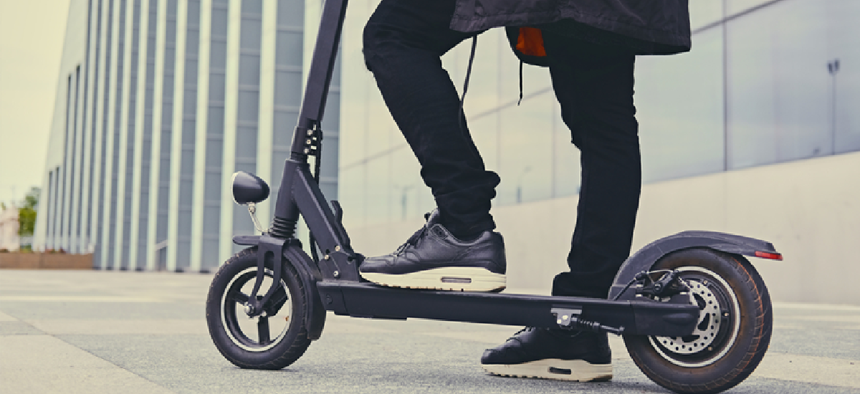Keeping e-scooters off sidewalks

The low-cost solution could help cities keep e-scooter riders off city sidewalks where they endanger pedestrians.
Researchers at California Polytechnic State University’s Digital Transformation Hub (DxHub) found an inexpensive way to keep e-scooter riders off city sidewalks.
Soon after Santa Monica, Calif., piloted dockless e-scooters to increase mobility and cut down on carbon emissions, it realized that signs, education, outreach and dedicated infrastructure couldn’t keep riders off city sidewalks, where they could endanger pedestrians and causing other safety issues. City officials called on DxHub for a way to use technology to encourage riders to stay on the street or in bike lanes.
DxHub is a partnership between Amazon Web Services and CalPoly and is part of the AWS Cloud Innovation Center program, which works on public-sector innovation challenges.
The researchers thought the best solution would be to power off the scooters when they were operated on sidewalks. They first tried to leverage a next-generation, dual-band GPS receiver chipset, but it wasn’t accurate enough to tell if the scooter was on the street or sidewalk. Then they landed on an approach that used an accelerometer to help determine whether the scooter was traveling on a relatively smooth asphalt street or on a sidewalk with regular gaps between sections of concrete.
By using a smartphone with a built-in accelerometer, student employee Casey Johnson wrote an application that detected and evaluated gaps on the sidewalk by reviewing when periodic spikes in the data indicated bumps from riding over the regular sidewalk gaps. He then classified the surface based on the consistency of the periods, DxHub said on its web page.
With an inexpensive electric scooter, an Arduino nano and a 50-cent accelerometer chip, Johnson built a prototype that sensed if it was on a sidewalk from the successive periodic bumps. If so, the Arduino would instruct the solenoid to disconnect the throttle power for five seconds, incentivizing the rider to get off the sidewalk.
The DxHub team developed the prototype in only two weeks, but the concept should be fine-tuned to account for variations in surface conditions before it is incorporated into commercial e-scooters, they said.
“While we have taken a strong role in public awareness and code enforcement, we needed a solution that could protect residents and riders alike,” said Kyle Kozar, Santa Monica senior transportation planner. “This prototype, developed in collaboration with the DxHub, proves that a solution could be implemented to address a very real need.”
In the next phase of its shared mobility pilot program, Santa Monica plans to give preference to e-scooter vendors that incorporate similar technologies.






